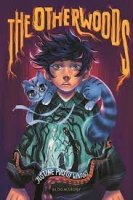The cattle trail era only lasted a couple of decades beginning in 1866. End of the trail cow towns such as Abilene, Dodge City, Wichita, the stern trail boss, ramrod Rowdy Yates (Clint Eastwood), Red River & John Wayne, Lonesome Dove, tall tales and yarns, stampedes, flash lightening and swollen rivers, and Indian attacks define the "trail drive" formula and plot. Sound familiar?
Well, it all originated with late 19th century and early 20th century memoirs and narratives of real, working cowboys. A core "cowboy" collection should include the early and influential favorite Charles Siringo, A Texas Cowboy: or, Fifteen Years On The Hurricane Deck Of A Spanish Pony published in 1888. Will Rogers said it "...was the Cowboy's Bible when I was growing up."
The Log Of A Cowboy was published in 1903. Although there is some disagreement as whether the narrative should be cataloged as fiction or as western history in 978, many buckeroos still consider it the best and most authentic of the trail driving books. These two titles along with Ross Santee's 1926 Men And Horses and his realistic 1928 novel, Cowboy, Abbott's 1939 We Pointed Them North, and, one of my favorites, Capp's 1968 novel, Trail To Ogalalla, would make a respectable beginnings of a "herd" of cowboy books. All should be in every American high school and public library. Of course, you might want to throw in some "SPUR" Award winners and even Cowboy Poetry Gathering edited by Hal Cannon.
Fortunately, because of the edition's colorful cover illustration by N.C. Wyeth, today's readers don't know the book is one hundred plus years old. If given a chance, the simple, honest, first person narrative quickly lassos the reader: "...Straw had confided to our Foreman that he could assign no other plausible excuse for the stampede than that it was the work of cattle rustlers...He admitted it might have been wolves chasing the range cattle, but thought it had the earmarks of being done by human wolves."
We living in the Midwest or West know how rugged and weather beaten frontier life was because working ranches and farms are still just outside the town limits. It's only the inhabitants on the coasts and big cities that need reminding. Many probably don't even believe much in Westerns ever really happened. My rural cousin's hands were like sandpaper and his grip like a vice. The boys in the school or local "Rodeo" club don't think much of the padded and protected footballers. Ages 14 and up 387 pages.
Recommended by Robert L. Hicks, high school librarian






